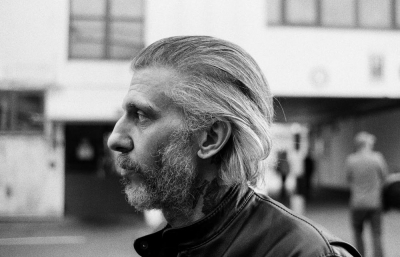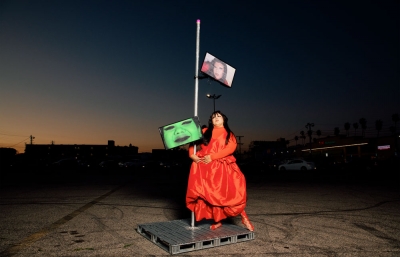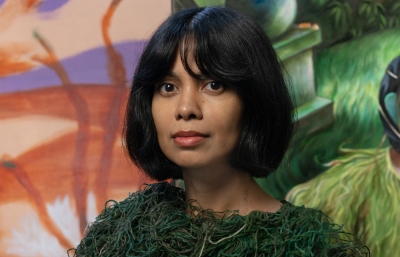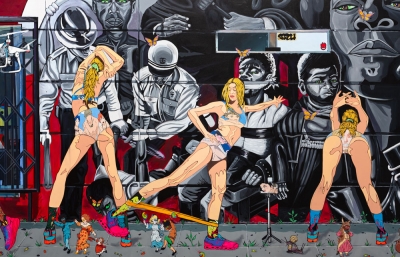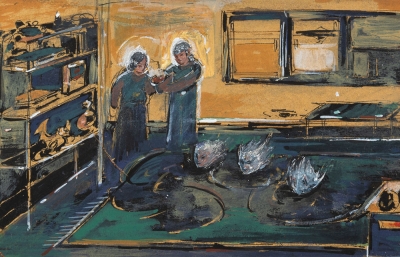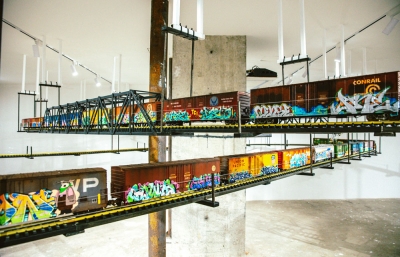"While signals of macro-economic volatility are a dominant talking point as we head into 2023, the data shows us a resilient art market bolstered by deep-pocketed collectors, particularly at the high end." —Noah Horowitz, CEO Art Basel
Now in its 6th Edition, Art Basel and UBS collaborate with arts economist Dr. Clare McAndrew to present research on the global art market. The 260 page report for 2022 reviews the value of sales and their respective forums (dealers, auction houses, collectors, art fairs, art) throughout different geographies and media. We have consolidated some of the headlines beyond the statistics, along with observations on external impacters and influencers, both physical and digital.
For 2022, global art sales increased to reach $67.8 billion, a rise of 3% on 2021. While this sounds strong, the high end of the market was the driving of growth, with works priced at over $10 million being the only segment to increase in value. The analysis was largely split between auctions (where sales actually fell 2% despite glitzy headlines) and dealers (which grew 7%) who reported the market to be “strong but thin at the top”. The smallest businesses (turnovers less than 250k) reported a decline in sales, with collectors exhibiting more caution. 
Sales were predominantly across USA, UK and China. Despite challenges with Brexit, the UK returned to second position with 18% of the market ($11.9 billion). With China reporting 17% ($11.2 billion) due to their ongoing struggle with COVID-19 where restrictions continue to affect in-person events and sales across the mainland and Hong Kong. The USA lead with a significant margin of 45% for global sales ($30.2 billion) supported largely by the auctions sector. 2022 saw the biggest sale in auction history with the collection of Microsoft co-founder’s Paul G Allen exceeding $1.5 Billion at Christies in New York. France came in fourth position with 7% ($5 billion) ,with the rest of the EU making up 12%.
Interesting social and political fluctuations were considered, noting important differences between the pandemic and other financial downtowns. Where the 2008 crash saw billionaire numbers fall by 30%, the pandemic actually boosted the wealth of the 1% through vital industries such as technology, e-commerce and healthcare. The number of billionaires worldwide has decreased the past year, with losses seen most notably across Russia and China. Despite this data, billionaire wealth has more than doubled in the past 10 years, which has undoubtedly supported the markets buoyancy at the top end. More diverse progress was disrupted by political and economic instability from the intensifying war in Ukraine, exacerbated by increasing inflation rates, supply issues, and looming recessions in key markets.
Online interaction decreased during 2022 for the market, but is still higher than pre pandemic levels. Given the investment in digital platforms and strategies, it is unlikely to regress further. Preferences for viewing a work IRL prior to purchasing remained an important factor, as did the need for in person events and interaction for recruiting new artists and collectors.
Beyond digital space as a forum for sales, the report also discusses the ‘crypto winter’ following the boom for art-related NFT's in 2021, which saw the market peak at $2.9 billion. Now with a saturated market, combined with a slump in Ethereum pricing; we see calmer prices and less speculation as sales for 2022 approach $1.5 billion. The average time between purchase and resale of art-related NFTs in 2021 was just 33 days. For 2022, the secondary market has accounted for 80% of the value of sales underlining the assertion that reselling is now the dominant activity on these platforms (rather than creation and new launches). That said, the technology is undoubtedly here to stay, as it continues to facilitate innovation and tools to support artists, gallerists, and collectors. 2023 will introduce new intelligent projects to replace older protocols for Web3, with a focus on security and regulation. The report also points to the rising popularity of Non-Transferable Tokens (NTT), also known as Soulbound Tokens and Blockweave. Cousin to the blockchain (in which blocks of data are linked to multiple blocks, rather than a single block) the blockweave relies on the more environmentally friendly ‘Proof of Access’ (PoA).

In summary, despite inflation, the tail end of the pandemic, supply chain issues, the war in Ukraine and cryptocurrency turbulence; the art market continues to grow in its post pandemic recovery. High net worth collectors are spending more last year than before the pandemic and looking toward 2023, it’s a mixed bag; with 45% of dealers surveyed predicting a rise in values. With the ongoing cost of living crisis affecting the mid tier infrastructure amidst rising political tensions; the outcomes remain anyones guess.
Text and report by Charlotte Pyatt

